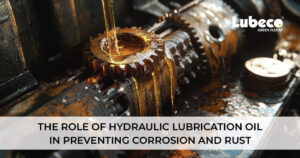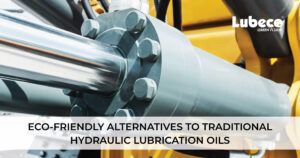Corrosion poses a significant threat to industrial equipment and infrastructure, leading to costly repairs, downtime, and safety risks. To combat corrosion effectively, industries must implement comprehensive corrosion control measures tailored to their specific needs and challenges.
In this guide, we’ll explore ten essential steps for implementing corrosion control measures in industrial environments and elaborate on each point.
1) Conduct a Detailed Corrosion Risk Assessment:
- Identify vulnerable assets and critical components.
- Analyze environmental conditions, including temperature, humidity, and chemical exposure.
- Evaluate historical corrosion data and failure reports.
- Consider operating parameters such as pressure, flow rates, and material compatibility.
- Engage corrosion experts and conduct on-site inspections to assess corrosion risks comprehensively.
2) Select Corrosion-Resistant Materials:
- Choose materials with intrinsic corrosion resistance, such as stainless steel, aluminum, and nickel-based alloys.
- Evaluate material properties, including strength, ductility, and chemical compatibility.
- Consider environmental factors and exposure conditions when selecting materials.
- Opt for corrosion-resistant coatings and linings to enhance the durability of vulnerable surfaces.
3) Implement Protective Coatings and Linings:
- Apply high-performance coatings and linings to protect metal surfaces from corrosion.
- Ensure proper surface preparation, including cleaning, degreasing, and abrasive blasting.
- Use corrosion-resistant coatings such as epoxy, polyurethane, and fluoropolymer-based paints.
- Consider factors such as film thickness, adhesion, and curing time for optimal coating performance.
- Regularly inspect and maintain coatings to detect any signs of degradation or damage.
4) Deploy Cathodic Protection Systems:
- Install impressed current cathodic protection (ICCP) or sacrificial anode cathodic protection systems to mitigate corrosion.
- Conduct soil resistivity surveys and potential measurements to design effective cathodic protection systems.
- Monitor cathodic protection system performance using remote monitoring and periodic inspections.
- Ensure proper installation and maintenance of cathodic protection equipment to maximize effectiveness.
5) Enhance Environmental Monitoring and Control:
- Implement environmental monitoring programs to track factors such as humidity, temperature, and chemical exposure.
- Install corrosion sensors and monitoring devices to detect corrosion-related parameters in real-time.
- Employ corrosion inhibitors and chemical treatments to control corrosive environments effectively.
- Implement preventive measures such as ventilation systems, humidity controls, and corrosion-resistant coatings to minimize environmental impacts.
6) Develop Corrosion Prevention Plans:
- Develop comprehensive corrosion prevention plans outlining specific measures, responsibilities, and timelines.
- Identify critical assets and prioritize corrosion control efforts based on risk assessments.
- Establish inspection and maintenance schedules for routine monitoring and upkeep of corrosion control measures.
- Train personnel on corrosion awareness, prevention techniques, and proper maintenance procedures.
7) Implement Corrosion Mitigation Strategies:
- Employ corrosion mitigation strategies such as surface passivation, corrosion-resistant design, and material selection.
- Implement corrosion control measures during the design and construction phases of industrial facilities.
- Monitor corrosion rates and trends to identify emerging issues and implement corrective actions proactively.
8) Invest in Research and Development:
- Allocate resources for research and development initiatives focused on corrosion prevention and mitigation.
- Collaborate with industry partners, academic institutions, and research organizations to leverage expertise and resources.
- Explore innovative materials, coatings, and technologies for enhanced corrosion resistance and durability.
9) Foster a Culture of Corrosion Awareness:
- Educate employees about the importance of corrosion control and its impact on safety, reliability, and cost-effectiveness.
- Encourage proactive reporting of corrosion-related issues and near misses.
- Recognize and reward employees for their contributions to corrosion prevention and mitigation efforts.
10) Continuous Improvement and Evaluation:
- Establish key performance indicators (KPIs) to measure the effectiveness of corrosion control measures.
- Conduct regular audits and assessments to evaluate the performance of corrosion control programs.
- Identify areas for improvement and implement corrective actions to address deficiencies.
- Foster a culture of continuous improvement by soliciting feedback from stakeholders and incorporating lessons learned into future initiatives.
Conclusion:
By following these ten essential steps, industries can develop robust corrosion control programs that protect critical assets, ensure operational reliability, and minimize maintenance costs. Investing in corrosion prevention and mitigation is essential for sustaining long-term competitiveness and achieving operational excellence in industrial environments.
Remember, proactive corrosion control is an investment in asset integrity and longevity, ultimately leading to safer, more reliable, and more efficient industrial operations.










